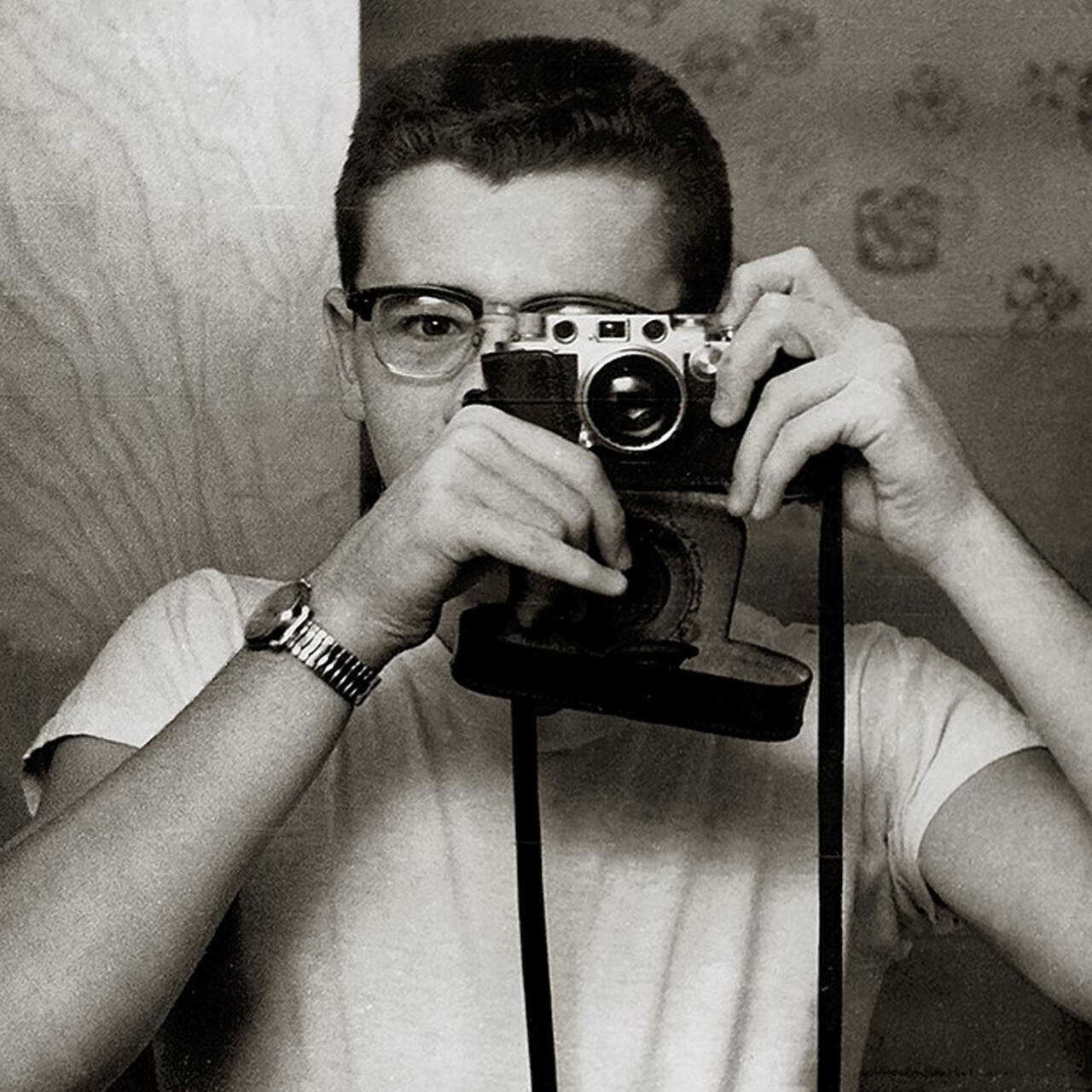John Akomfrah creates thoughtful video works of haunting audiovisual intensity. From November 9 to January 28, the SCHIRN presents the first comprehensive exhibition in Germany of his influential film installations
John Akomfrah tells of the radical changes and crises of the present and past on characteristic large-format screens. From November 9, 2023 to January 28, 2024, the SCHIRN is presenting for the first time a comprehensive overview of the artist’s work in Germany, featuring a selection of three major multichannel installations from recent years: “The Unfinished Conversation” (2012), “Vertigo Sea” (2015), and Akomfrah’s new work, “Becoming Wind” (2023). A co-founder of the influential London-based Black Audio Film Collective (established in 1982), Akomfrah’s work interweaves newly shot film sequences with archival material to create multilayered, at times associative collages, frequently in the form of simultaneous narrative structures. Akomfrah’s immersive installations critically examine colonial pasts, global migration, and the climate crisis. He addresses one-dimensional historical representations by allowing multiple perspectives to emerge in the narrative, disrupting the notion of linearity and the illusion of a one and only truth.
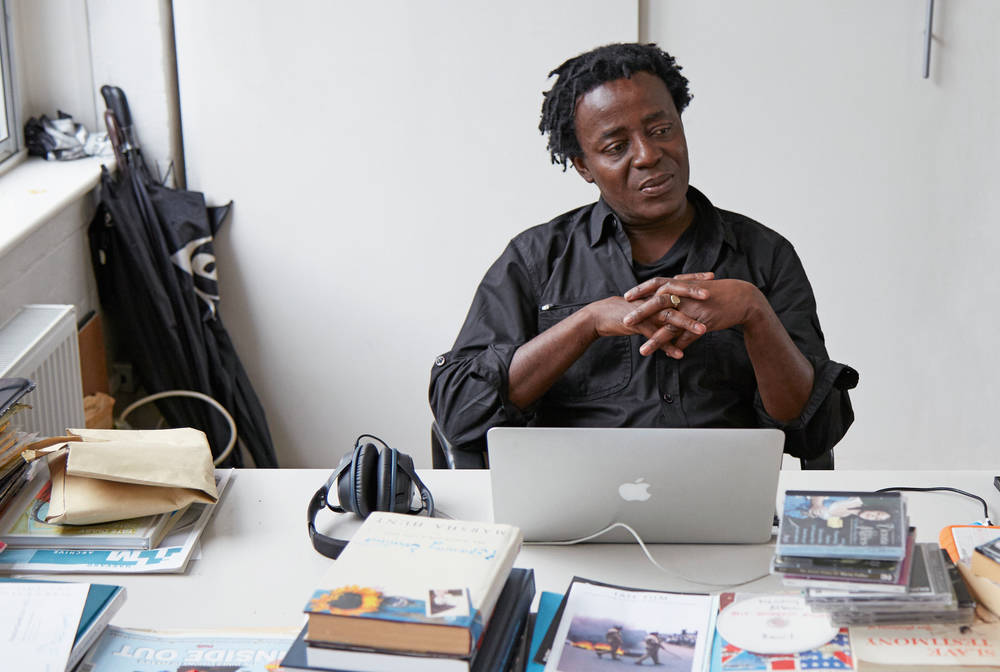
John Akomfrah aims to create what is unseen, untold, and unheard. His installations evoke poetic and powerful images to describe the urgency of these themes, yet without moralizing about them.
The Unfinished Conversation
The “Unfinished Conversation” pays homage to the well-known influential British cultural theorist, sociologist, and founder of cultural studies, Stuart Hall (1932–2014), with whom Akomfrah was long acquainted. The artist recounts a sensitive, almost poetic exploration of Hall’s legacy, using the sociologist’s own life story as a springboard for examining his theories and ideas about identity, immigration, and colonialism. Akomfrah masterfully weaves together assorted material from sources such as Hall’s own extensive archive, including his speeches and interviews as well as photos, and historical events. The resulting multilayered acoustic and experiential space directs a critical gaze at British society.
“The Unfinished Conversation” begins with colorful Caribbean landscapes that Akomfrah combines with black-and-white scenes from industrial England. Hall, who was born in Jamaica in 1932, came to Oxford to study literature in 1951. Akomfrah links Hall’s theoretical work and his radio and television appearances in the 1950s and 1960s with recordings of events and the people who shaped British society during this period, including the unsolved murder of the Antiguan Kelso Cochrane, the campaign for nuclear disarmament, and the Aldermaston marches. There are also literary references to figures such as William Blake, Charles Dickens, and Virginia Woolf. Jazz music is another central aspect that runs through the film, both as a soundtrack and as film footage of musicians playing live and rotating record discs. The film installation reflects Hall’s approach that identity is not a state of being but rather a process of “becoming,” that is, constantly in flux, a product of history, memories, and intersections between the public and private spheres. Hall did not regard identity and ethnic affiliation as fixed terms but rather as elements of an “ever-unfinished conversation.” “The Unfinished Conversation” can be read both as an experimental extension of a documentary aesthetic and as a comprehensive critical visualization and questioning of one-dimensional narratives about what life is really like for Black people in Great Britain.
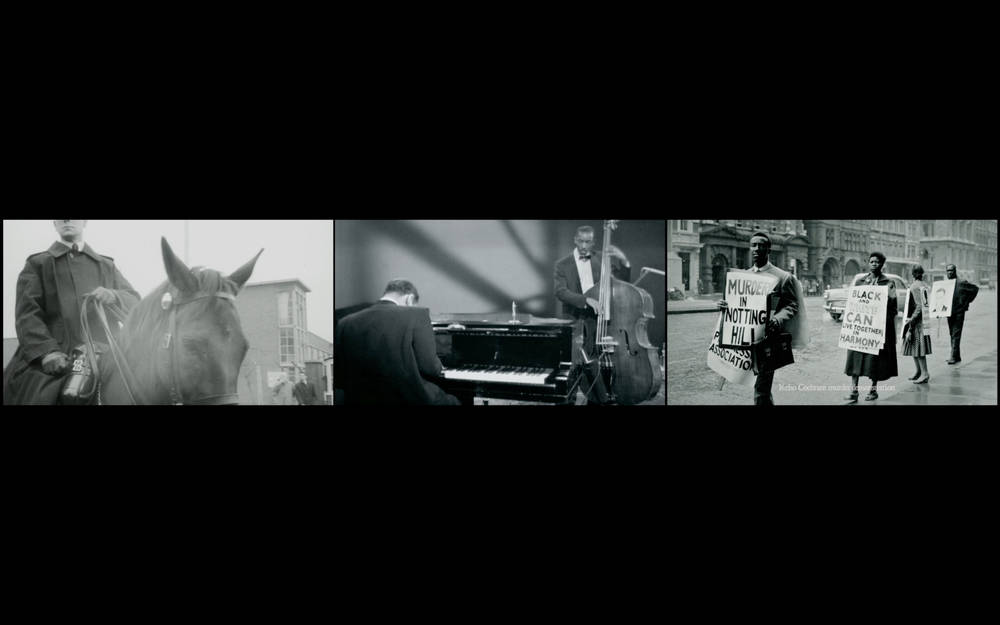
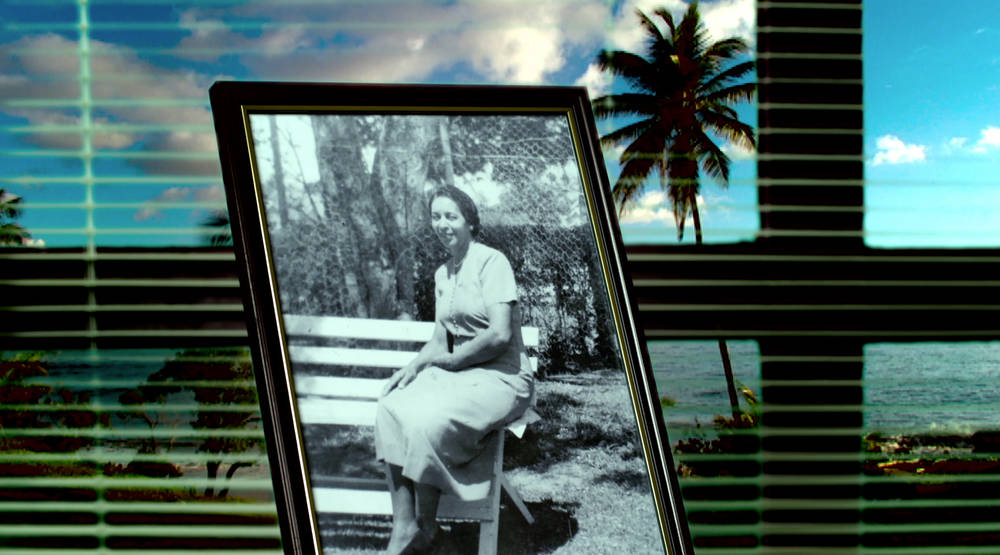
Vertigo Sea
“Vertigo Sea” is a poetic meditation on film that shifts from one century to another in its exploration of the relationship between people and the sea. Across three large screens, Akomfrah juxtaposes footage he has shot himself in Scotland on the Faroe Islands and Skye, and in Norway, with archive material that includes breathtaking excerpts from BBC nature documentaries and fragments recited from the books “Moby Dick” (1851) by Herman Melville and “Whale Nation” (1988) by Heathcote Williams. One focus is the sea and the exploitative structures with which it is associated, but the work also addresses current ecological issues. The artist illustrates this by linking the whaling industry with the abduction of millions of African people during the transatlantic slave trade. Refugees currently attempting to cross the sea similarly play a role. Beauty and terror go hand in hand in tightly edited images.
Akomfrah shows one scene from a movie that depicts the real-life massacre of over 130 enslaved people by the crew of the British ship Zong in 1781. A figure in historical uniform appears repeatedly in the video installation as an embodiment of Olaudah Equiano (1745–97), who was abducted from Nigeria as a child and enslaved, but after emancipation became a key campaigner against the slave trade. Interweaving biographies such as these is a tactic typically used by Akomfrah to shift the focus to overlooked histories. The intersection of genres, epochs, and perspectives is another recognizable stylistic device the artist employs in “Vertigo Sea” to create unexpected associations and disrupt our notions of linear narration.
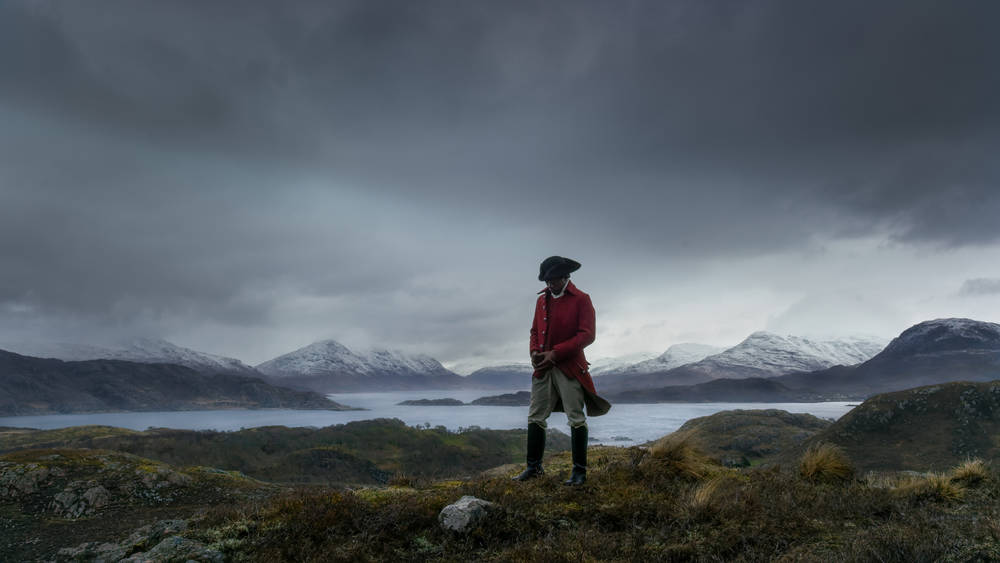
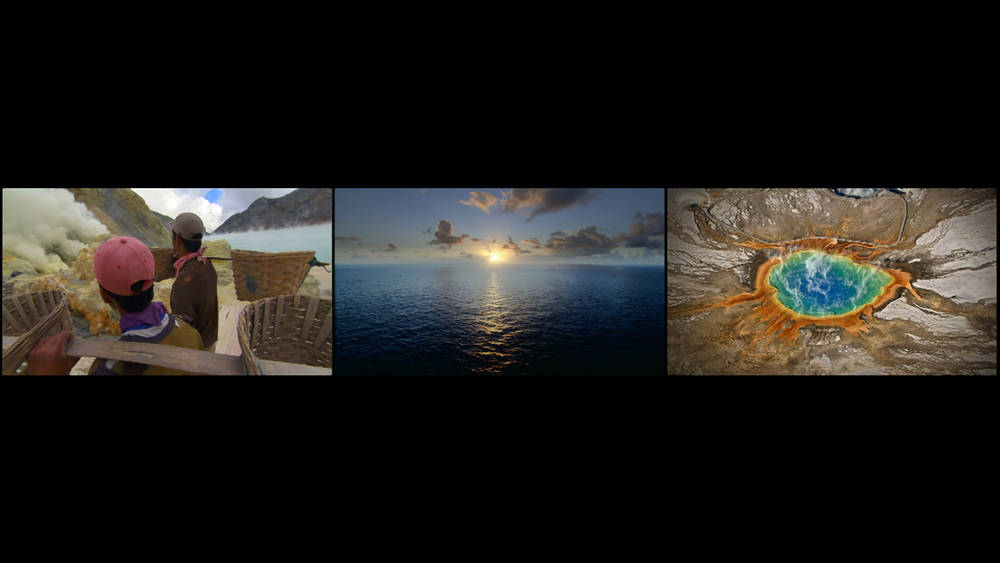
Becoming Wind
In his new work on five screens, "Becoming Wind", Akomfrah creates an allegorical representation of the Garden of Eden and its disappearance. In elegiac black-and-white scenes, the installation evokes a past when an abundant diversity of plant and animal species still existed on the planet, while also directing a gaze at the precarious humancentric ecosystem of the Anthropocene, the current epoch of climate change. Phrases frequently appear on the screens bearing sentiments that many people feel apply to them, relating to the climate crisis, for example: “We need to be quick” and “It moves among us.” Children are repeatedly seen playing on the beach or in the waves. Simultaneously the video accompanies trans* actors and activists in their everyday lives. The artist is interested in a specific experience from which something very universal can be read: the deep-seated need to be able to develop one’s own identity freely. The flexible identities of the future face challenges that have never existed before. This is where Akomfrah identifies intersections with dramatically changing ecological spaces and future adaptations to them. “We almost need to become wind-like to get there,” says the artist with respect to the rapid changes occurring in the present day.
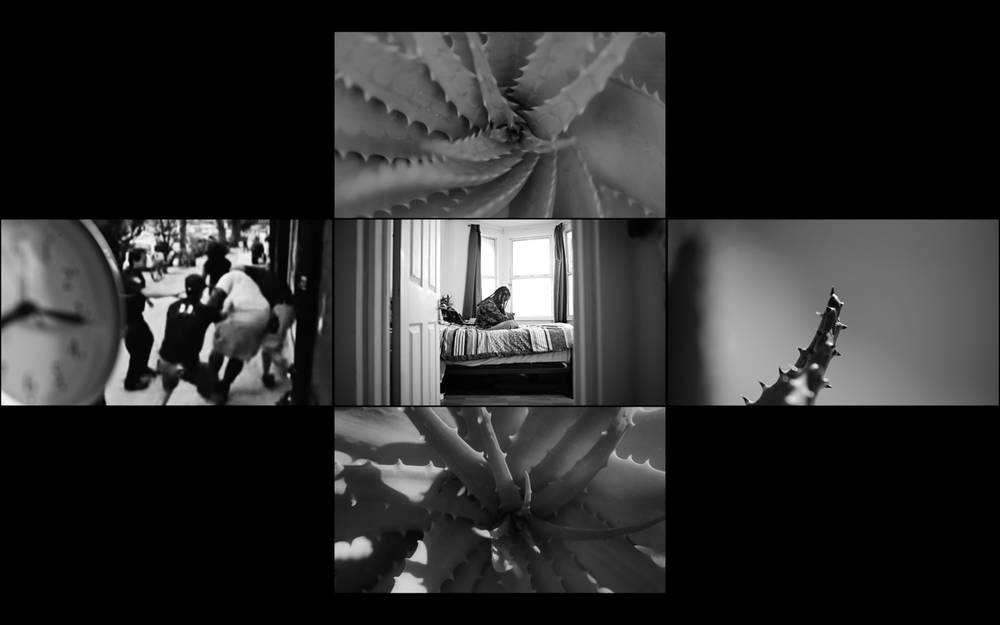
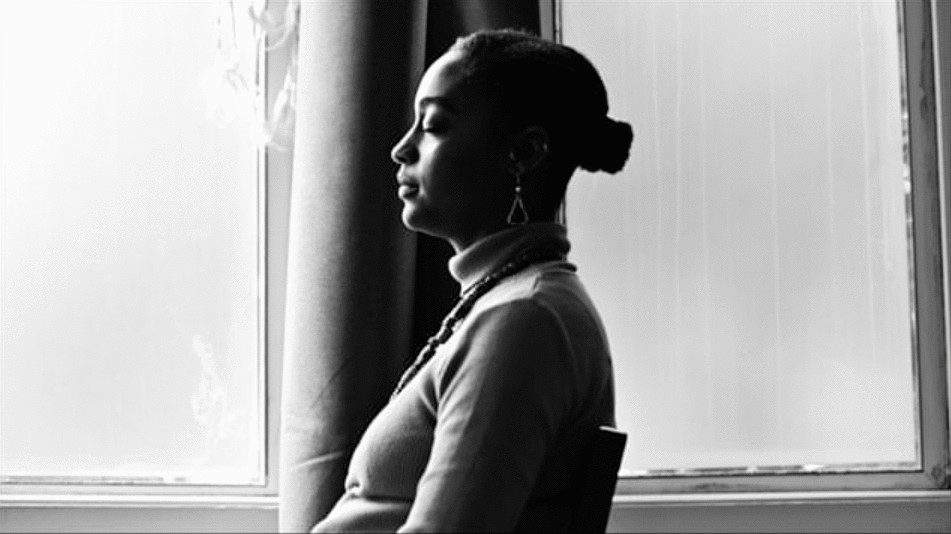
JOHN AKOMFRAH. A SPACE OF EMPATHY
NOVEMBER 9, 2023 – JANUARY 28, 2024







